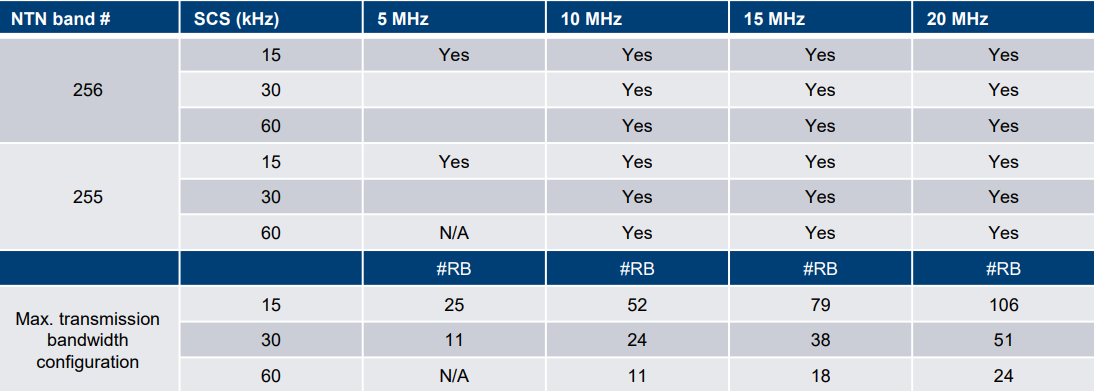3GPP Frequency Bands for 5G Satellite Communication
5G Satellites
3GPP is doing great work and evolving the 5G NR to support non-terrestrial satellite communication. The satellite network is also know as Non-Terrestrial Network (NTN) and it study started with 3GPP release 15 and evolving. Enabling 5G system to support non-terrestrial networks (NTNs) has been one direction under exploration in 3GPP.
NTN System Requirement
3GPP SA working Group 1 (SA1) is responsible for the overall system requirements for 3GPP systems. In 2017, SA1 started a study to identify use cases and service requirements for using satellite access in 5G. 3GPP TR 22.822, identified use cases for satellites being used in both as an access technology from a UE as well as a backhaul link between a terrestrial base station (gNB) and a 5G core network (5GC).
- Satellite UE/Mobile use cases include use of satellite for broadcast service, to guarantee coverage for IoT devices, and mission critical access in disaster situations.
- Satellite backhaul use cases include backhaul between a gNB in a remote area and a 5GN, as well as backhaul between a moving gNB deployed on a train and a 5GC.
Current terrestrial 3GPP systems are typically deployed so that they provide coverage within a single country only, fulfilling the associated regulatory obligations for that specific country. Satellite-based radio systems may, however, cover multiple countries or cover international waters boundaries. This
leads to new challenges for the 3GPP system. The study aims to provide guidelines on the fulfillment of relevant legal and regulatory requirements in such situations.
Satellite Frequency Bands
5G NR for Terrestrial network was designed for forward compatibility, low latency, advanced antenna technologies, and spectrum flexibility with uses of low, mid, and high frequency bands and TDD/FDD Duplex mode. The NTN Satellite Network have its different challenges in terms of latency requirements, Doppler effect, deployment architecture and Orbit location (LEO, GEO and MEO).
For NTN, there are multi frequency ranges in FR1, beyond 10GHz and FR2 are being discussed within 3GPP. These will be supporting both FDD and TDD duplexing.
FR#1 Frequency Bands for Satellites
-
- FR#1 frequency bands n255 is sometimes called as S-band and n256 as L-band.

-
- These frequency band supports FDD duplexing to support low round trip time
- These band have current maximum bandwidth is 20 MHz with up to 40-MHz overall bandwidth envisaged in the future
- Support NR subcarrier spacing (SCS) as 15KHz, 30KHz and 60KHz
- Being lower frequency they have lower path attenuation, and they’re already used in legacy communications
- Most suitable for satellite based IOT use case

- FR#2-0/FR#2-1 Frequency Band for Satellites
- 3GPP is also discussing for above 10 GHz frequency range for long term use
- As per 3GPP this frequency range will be known as FR#2-0 and FR#2-1 with band numbers as n510, n511 and n512
- These frequency bands will use FDD duplex mode
- The Ka-band is the highest-priority band with uplinks between 17.7 and 20.2 GHz and downlinks between 27.5 and 30 GHz, based on ITU information regarding satellite communications frequency use.

- FR#2 Frequency Bands for Satellites
- FR#2 frequency bands for Satellites starting 26GHz to 48 GHz
- Frequency band number starts from n256 to n262
- This frequency bands will support TDD duplexing

References:
- 3GPP TR 38.811 : Study on New Radio (NR) to support non-terrestrial networks
- 3GPP TR 38.821 : Solutions for NR to support non-terrestrial networks (NTN)
- 3GPP TR 23.737 – Study on architecture aspects for using satellite access in 5G
- RP-193234 : Solutions for NR to support non-terrestrial networks (NTN)
- TS 22.261 : Service requirements for the 5G system; Stage 1 (Release 18)
Related Posts:


